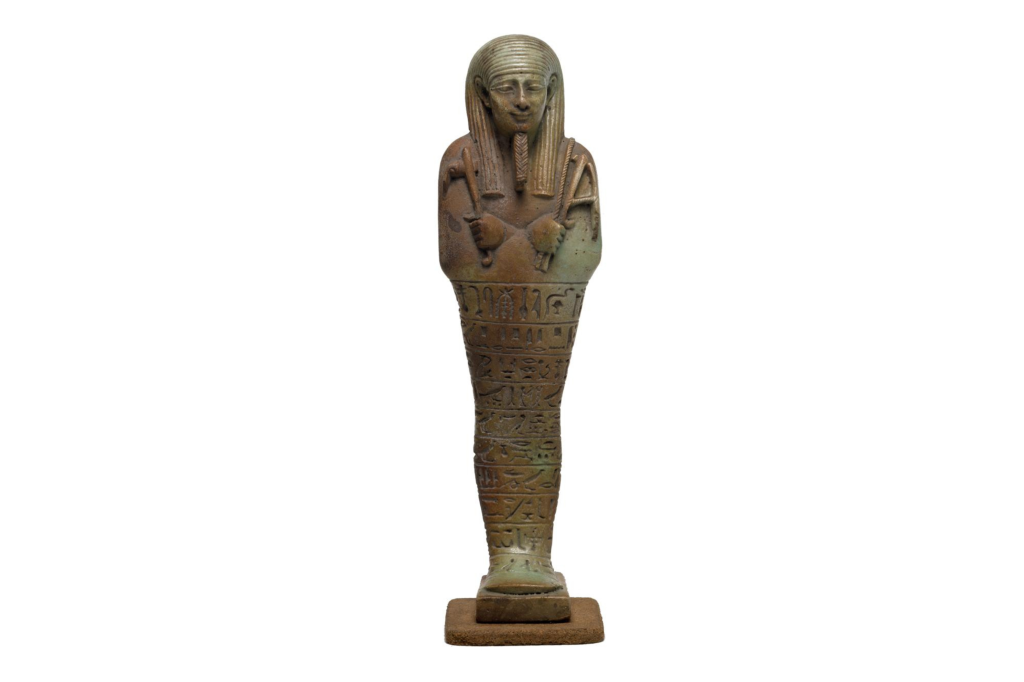
In Ancient Egypt, funerary statuettes were initially designed to provide an alternative support to the spiritual elements of the deceased: if the mummy deteriorated, these elements could still rely on the replicas of the mummy to maintain their attachment to the body.
From the New Empire (from 1580 to 1080 BC) onwards, these statuettes were given a new function: that of serving the deceased in the paradisiacal fields of the afterlife and guaranteeing that all the tasks associated with them would be carried out. This is why the statuette of Djedhor, son of Renpetnefert, has agricultural tools in his hands, such as a mattock, an axe and a sack
The inscription on the body of the statue is a version of chapter 6 of the Book of the Dead, a set of texts that accompanied the dead on their journey to the afterlife.
It belonged to the Allen collection.
